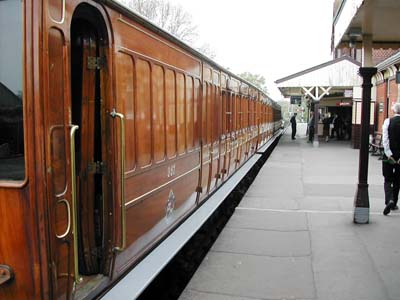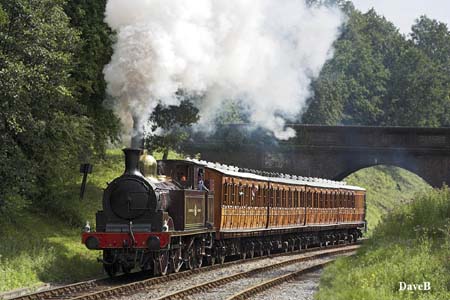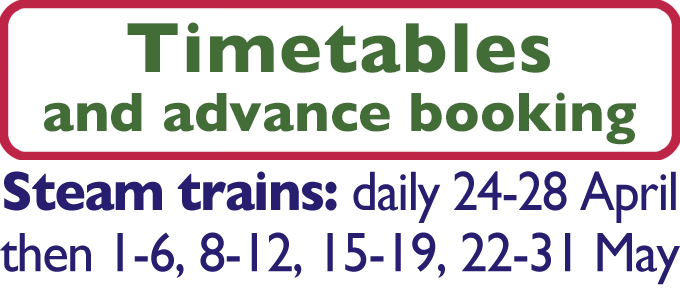

|
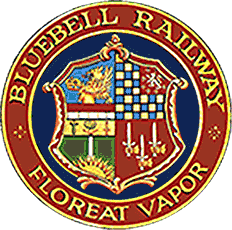
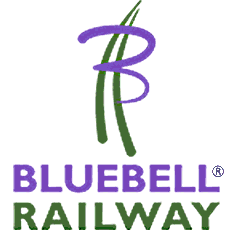
|

|
|
Carriage & Wagon Dept - Stock Lists: Carriages, Vans, Wagons & Multiple Units - C&W News SR Coach Group - Goods Division - Operation Undercover - Technical - Join us Chesham Set: BASH - History - Engineer Article - Restoration Project - Full Third 394 - Brake Third 387 - Test Run Composite 368 - Composite 412 - Relaunch Gala - HRA Award - Relevant Links 
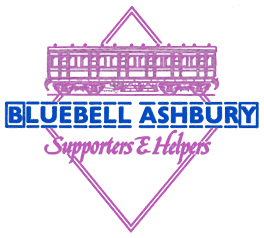
Bluebell Ashbury Supporters and HelpersThe Restoration ProjectLuck has frequently played a part in the survival of these coaches. They were unexpectedly selected for restoration because a) they had been cleared internally for a filming job, b) they were in the shed, c) their doors and body structure appeared sound and d) they were not Ex BR Mk.1 coaches. Martin Lock, having decided that their restoration was feasible, gathered together a team to tackle, not just the carpentry and mechanical side, but also the necessary fund-raising. The aim was to restore all four coaches to their 1920s' lined and varnished teak finish, and capable of every-day service. He estimated that materials worth £35,000 would be required for the project, but the Bluebell was not in a position (what railway is?) to fund it. The project was named BASH, Bluebell Ashbury Supporters and Helpers. Because the set is close-coupled, the first two coaches to be restored were the two with conventional couplings at the outer ends: Driving Trailer Third and the Brake Third (these links give full details of the restoration of each). The culmination of the restoration of these two coaches was a Test Run in January 1999, and a supporters' day, prior to their re-launch into public service at the Winter Steam-up Weekend in mid-February. No.387 wins Transport Trust Restoration Award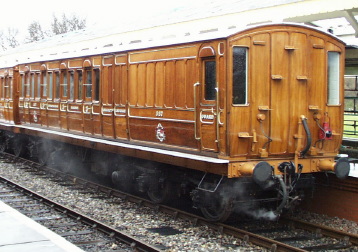 The Brake coach, No.387, at Kingscote. (Lewis Nodes) Completion of the project
Much of the teak used in the reconstruction has been salvaged from various sources, including off-cuts from other carriage projects and a rebuilt church steeple, old school laboratory benches, fire-doors from Kodak in Harrow, and a large quantity of teak benches from a factory which was being demolished as well as by salvaging parts of a redundant cricket pavilion built around two-thirds of a very substantial LCDR six-wheeler. Certainly the LCDR did not consider using a cheaper material where teak would do better. Even the inch-thick compartment partitions were teak, and the roof was pitch-pine! Other teak has been specially purchased through the LNER Coach Association at Pickering. Seats have been retrimmed in a reproduction LT moquette, produced by the original manufacturer using the original loom cards, in conjunction with the LT Museum. The two spare doors required to replace those of the former driver's cab also came through the museum, having been removed from the sixth Chesham vehicle. All the door hinges are being replaced, the old brass ones being too badly worn for further use. Their replacements have been manufactured by Samuel Wilkes, a firm who have supplied the railway industry since before these coaches were built, and who made items such as external brasswork and door locks which are actually still on these vehicles. Interior transfers have come from Tearnes, again an original manufacturer. Relaunch and another awardThe final carriage to be completed was No.412, in December 2006, but then the brake carriage needed further work, particularly on its roof, after which the project was rounded off with a relaunch gala in July 2007, hauled by the most appropriate locomotive possible, Met. Tank No.1, loaned to us from the Buckinghamshire Railway Centre. Photo: Dave Bowles
A couple of months earlier, the project was awarded the overall winner in the Heritage Railway Association Carriage & Wagon awards.


Return to BRPS Home Page, to the Timetable or to Special Events Carriages & Wagons - Intro - Development - Stock Lists: Carriages, Vans, Wagons & Multiple Units - Carriage Fleet Review - Join us C&W Works News - SR Coach Group - Goods Division - Operation Undercover - Carriage Shop - Technical Pages Chesham Set: BASH - History - Engineer Article - Restoration Project -Full Third 394 - Brake Third 387 - Test Run Composite 368 - Composite 412 - Relaunch Gala - HRA Award - Relevant Links Visitor Info. - Museum - Trust - Catering - Contacts - What's New - Projects - Locos - Carriages & Wagons - Signals - History - Other - Links - Search - FAQ Why not become a BRPS Member? - Get more involved as a Volunteer © Copyright BRPS. Privacy Policy |
